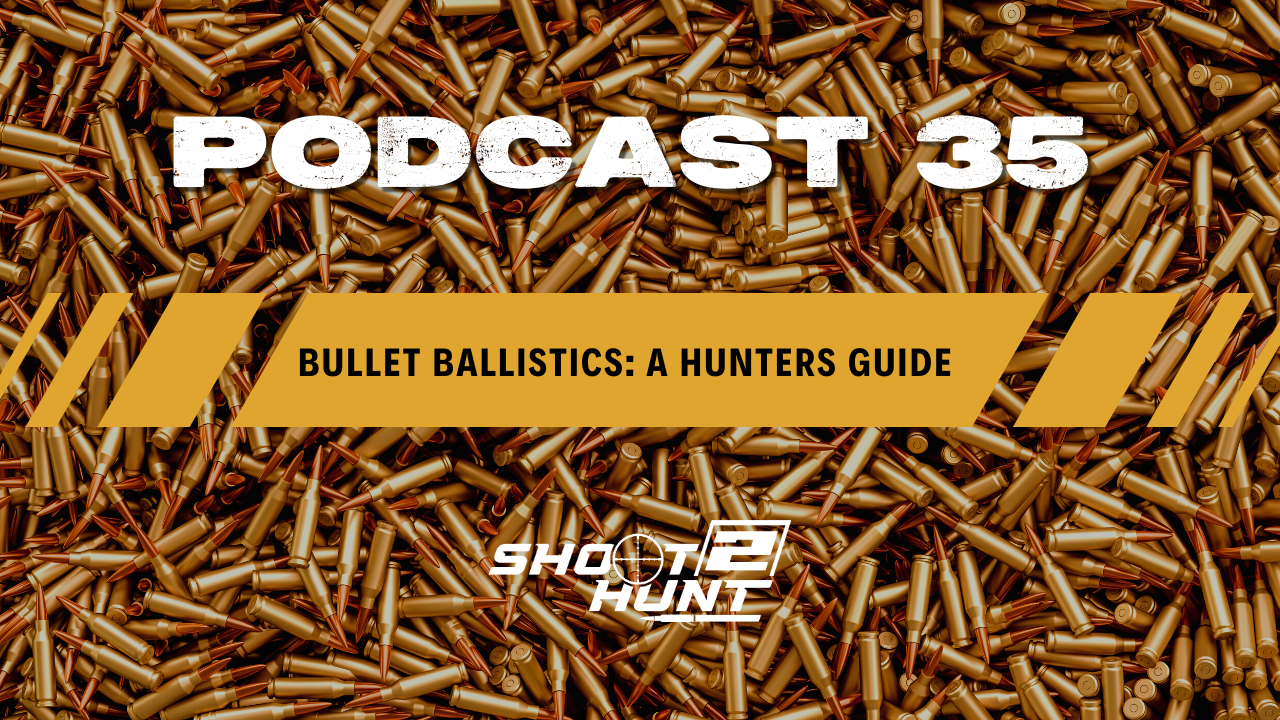Wound Channels, Bullet Energy, Magnums vs Average Cartridges, Ballistic Gel Studies and Much More.
STAY IN TOUCH 🦻
➡️SHOOT2HUNT
🖥️ Website: https://shoot2hunt.com/
📱 Instagram: https://www.instagram.com/shoot2hunt/
🚨Podcast Submissions accepted at [email protected]
💻 Youtube: https://www.youtube.com/channel/UCoUY–w-O03BY-P_ioBrpSQ
Podcast: Play in new window | Download









11 comments on “35. Bullet Ballistics: A Hunters Guide”
Mike Morrison
Thank you for this episode!
Your guest validated a lot of things and dispelled a lot of “Known” truths.
very informative. just mind blowing how many animals killed with the .223, and how he may not see a huge difference in time of death compared to the big magnums. bullets matter!
Marketing Admin
Bullets do matter! Appreciate the feedback.
George Fournier
Your guest and commentator needs to learn a lot more of the physiology of how animals die and what makes them die quickly. He definitely does not understand tension pneumothorax. It is not a sucking chest wound. There are some isolated facts I agree with, but in general I am confused by him. Bullet fragments can travel considerable distances from the wound channel. I have seen it on x rays.
Marketing Admin
It seems like you know your stuff. Would it be unreasonable to come on the show and school our boy?
Josh
So what do you do if you’re stuck in California and have to hunt with copper bullets? How do you make a good decision on a caliber and bullet weight for; elk, deer, antelope, blacktail, and black bear.
Phil Cox
I had the same question. Lots of great info that has absolutely no value to me in Cali.
Marketing Admin
We recently cover this question on a future podcast episode. Stay tuned for that.
Phil Cox
Any teaser as to when that will be coming out?
David
What 7mm prc bullet would you use on a moose?
David Hartley
Fellas, as a deer culler in NZ I can say with absolute clarity this episode absolutely nailed the issue.
Please can you tell me the name of your guest because all I can hear is the word “Form” and I can’t find a reference to his name in the notes.
Shooting hundreds of large red deer every year, our goto cartridges are .223 Rem, .243 Win, 6mm CM, 6.5 CM and .308 Win (carbine), shooting nothing but cup & core soft fragmenting bullets such as ELD-M, ELD-X, Speer BTSP, Sierra GameKing (old one not the newer tipped version). I’m pretty horrified at the incredible amount of misinformation swirling around on YouTube, particularly w.r.t. so called “match” bullets and monos. It does my head in that a lot of these influencers are trotting out time worn adages that simply don’t stack up with today’s products or the professional’s field experience – God forbid you try and point out the error in their statements (with evidence) because they just double down with sarcasm or worse still they delete the comment, so their channels just become echo chambers of agreement amongst guys that shoot just a handful of deer every year if that.
Personally you wouldn’t get me shooting Barnes type swaged copper bullets in open country if you paid me, the percentage of failures is too high and even though we shoot deer to waste these days (such is the drastic over-population), no one wants to wound and see them run off into unrecoverable positions. The 2400 ft./s minimum is exactly our experience (learned the hard way) and because we are frequently shooting 400 m+ due to the terrain, a non-fragmenting monolithic is just flat-out unreliable at that range.
I really wish a well thought through and produced synopsis of this podcast could be created in video form. We should be realistic and assume that not many people interested in this topic are going to be able to sit down and listen to this whole podcast beginning to end. To be fair you could probably distil the key points with visuals down to a sub 30 minute video. The fundamental principles of terminal ballistics have never really been explained properly in YT video format to my mind and someone with the brand / credibility needs to get behind it because from what I see the old school opinion is still winning the argument, despite being for the most part flat out wrong!
Keep up the good work fellas.
Cheers
Joel
Finally a conversation on not only velocity but wound size in comparison to caliber size and how energy is Not a unit of killing. Awesome! Bullet selection Should be about both one’s preference on what it does to the meat also with an understanding of the reasons it does what it does. Most don’t know the reasons. Well done! I wish manufacturers wouldn’t state velocity limits only for minimal expansion. I’d love to see an (on gel at least) minimum velocity for maximum expansion listed as well. That would give hunters more information to use. I do wonder what you all think about the newer fragmenting monolithic bullets as well. Cheers, and keep it up!